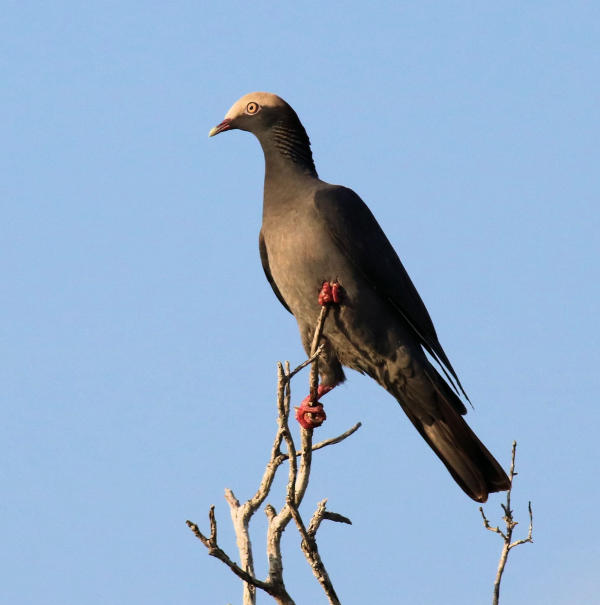
White-crowned Pigeon, in Texas?
|
How many species from other continents can American and Canadian birders find during one week? This week, birders found two Asian species – a Sedge Warbler and Common Ringed Plover – plus a European species, a Gray Heron, almost made it to Canada when it landed on a ship far offshore of the Grand Banks in Newfoundland. There were also three first state records, a first provincial record and a second state record.
First state record Fork-tailed Flycatcher – near Casper, Wyoming
First state record Gray Flycatcher – Monhegan Island, Maine
First state record Rock Wren – southeast Pennsylvania
First provincial record Common Ringed Plover – Campbell River, British Columbia (Eurasian species)
Second state record White-crowned Pigeon – Cameron, South Padre Island, Texas
Second continental record Sedge Warbler – Gambell, St. Lawrence Island, Alaska (Asian species)
Really rare sightings:
Willow Flycatcher – Gambell, St. Lawrence Island, Alaska
Fork-tailed Flycatcher – Les de-la-Iles-Madeleine, Quebec
Gray Heron – offshore Grand Banks, Newfoundland (Eurasian and African species)
Yellow-billed Loon – Summit, Colorado
Kirtland’s Warbler – Charleston, Kiawah Island, South Carolina
Townsend’s Warbler – coastal North Carolina
Frigatebird (probable Magnificent) – Block Island, Connecticut
Several exciting rare sightings:
Vermillion Flycatcher and Say’s Phoebe – southeast Missouri
Alder Flycatcher – near Santa Barbara, California
Lark Bunting, Townsend’s Solitaire, Black-throated Gray Warbler, Say’s Phoebe – Massachusetts
Brown Booby, Roseate Spoonbill, Prothonotary Warbler – Phoenix area, Arizona
Blue-footed Booby – offshore Tillamook, Oregon
Continuing Rare Birds included the Sinaloa Wren in Arizona, a Blue-footed Booby in Utah, Nazca Booby and Blue-footed Booby in California, a Golden-crowned Warbler in Texas, and a Black-tailed Gull in British Columbia. How long will these rare birds persist, and what exciting new rare and off-course birds will birders find this week?
For more information, see the American Birding Association’s Rare Bird Alert at http://blog.aba.org/2018/08/rare-bird-alert-august-3-2018.html
Often, you can find more information about individual rare bird sightings from the state rare bird alert listserves, which you can access at http://birding.aba.org/